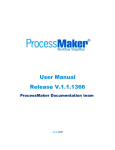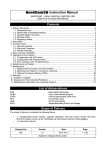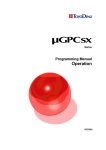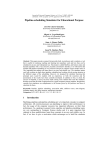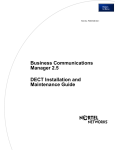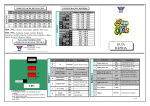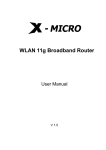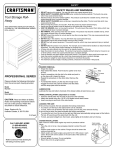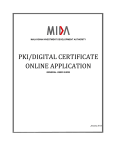Download Índice de contenidos
Transcript
FAQ Subject: FAQ Índice de contenidos 1 General.................................................................................................................................... 3 1.1What is COMPUTAEX?..............................................................................................................................................3 1.2What is CénitS?..........................................................................................................................................................3 1.3What is LUSITANIA?..................................................................................................................................................3 1.4Which are the goals of the Foundation COMPUTAEX?.............................................................................................3 1.5What is a supercomputer?..........................................................................................................................................3 1.6What is parallel computing?........................................................................................................................................4 1.7Why parallelize?..........................................................................................................................................................4 1.8What is shared memory?............................................................................................................................................4 1.9What is a queue?........................................................................................................................................................4 1.10 What is a queue manager?......................................................................................................................................4 1.11 What is MPI?............................................................................................................................................................5 1.12 What is OpenMP?....................................................................................................................................................5 1.13How can i use LUSITANIA supercomputer resources?...........................................................................................5 1.14What services does CénitS offer?............................................................................................................................5 1.15What is an example of computing capacity offered by LUSITANIA?.......................................................................6 1.16What could compare LUSITANIA storage capacity with?........................................................................................6 2 User......................................................................................................................................... 7 2.1How do I stop a job in a queue manager?..................................................................................................................7 2.2How can I view the output of a job that is running?....................................................................................................7 2.3Set environment variables for Intel Fortran compiler 10.1.........................................................................................7 2.4My software has defined storage requirements. How can I request this storage?....................................................7 2.5I filled out the resources request form and I am making use of the supercomputer, but I need more storage than asked. What should I do?................................................................................................................................................7 2.6My jobs demand lots of I/O operations. Is there any type of storage to meet this need?..........................................8 2.7Why doesn't my job run?............................................................................................................................................8 2.8How can I know what the job resources use are?......................................................................................................8 2.9I need to upload my source code to LUSITANIA supercomputer. How must i proceed?..........................................8 2.10When connecting LUSITANIA, a server authenticity message is shown. What should I do?.................................8 2.11I am experiencing performance issues in my job. What is the problem?.................................................................9 Pág. 2 Subject: FAQ 1 General 1.1 What is COMPUTAEX? It is the Computing and Advanced Technologies Foundation of Extremadura (hereafter referred to COMPUTAEX) and willingly of the Junta de Extremadura, as founding institution, was established as an organization in nature non-profit foundation. Recorded in the Register of Foundations of Extremadura, has legal personality and full capacity to act and can make, therefore, all necessary acts to fulfill the aims for which it was created. 1.2 What is CénitS? CénitS is the Extremadura Supercomputing, Technological Innovation and Research Center aimed to promote and disseminate hpc services and advanced communications to the researcher communities of Extremadura, or that company or institution that requests it and thus contribute through technological improvement and innovation, improving the competitiveness of enterprises. 1.3 What is LUSITANIA? LUSITANIA is the name given to the supercomputer that CénitS houses, whose distinguishing feature is its shared memory. You can see all the technical features in detail in LUSITANIA technical features section. 1.4 Which are the goals of the Foundation COMPUTAEX? The Foundation’s aim is to promote the development of information technologies, the use of intensive computing and advanced communications as tools for sustainable socioeconomic development, encouraging the participation of civil society mobilising their resources and paying special attention to co-operation between public and private research centres and the productive sector. The Foundation’s main objective is to create, operate and manage the Supercomputing Centre of Extremadura. 1.5 What is a supercomputer? It is a computer with calculation capabilities far superior to the common, depending on the season. Today's supercomputers tend to become tomorrow's ordinary computers. Pág. 3 Subject: FAQ 1.6 What is parallel computing? Parallel computing is a form of computation in which many resources are carried out simultaneously to solve a problem: • • • 1.7 Why parallelize? • • • • • 1.8 Running on a computer with multiple CPUs. The problem is divided into separate parts. Each part is running simultaneously. Results are obtained in less time (wall clock time). It is a solution to large/complex problems. It allows parametric scanning. Study of different variants of the problem. Current processors are of n-cores. What is shared memory? Shared memory is one of the mechanisms listed under the name of Inter Process Comunication (IPC), along with semaphores and message queues (FIFO). Using shared memory, as its name suggests, we can create shared memory areas by several processes. Thus process changes made to the values stored in shared memory are visible to other processes using the same shared memory. 1.9 What is a queue? A queue is a particular kind of collection in which the entities in the collection are kept and processed in incoming order. The queue configuration (priority, resources, runtime,...) is applied to the entities in the collection. 1.10 What is a queue manager? A queue manager is a management system to plan and control task executions in the collection, to optimize resources, to minimize costs and maximize applications performance. Pág. 4 Subject: FAQ 1.11 What is MPI? MPI1 (Message Passing Interface) is a standard that defines the syntax and semantics of the functions contained in a message passing library, designed to use it in programs that exploit the existence of multiple processors. Message passing is a technique used in concurrent programming to provide synchronization between processes and to allow mutual exclusion. Its main feature is that it does not require shared memory, so it is very important in distributed systems programming. In LUSITANIA supercomputer platform it can be used when a job runs on more than one node. 1.12 What is OpenMP? OpenMP2 (Open Multi-Processing) is an application programming interface (API) for shared memory multiprocessing programming in multiple platforms. It could also be defined as a portable and scalable programming model that gives developers a simple and flexible interface to develope parallel applications for platforms ranging from desktops to supercomputers. In LUSITANIA supercomputer platform, this API has the entire potential of the compute nodes, since they are characterized by their large volume of shared memory. 1.13 How can i use LUSITANIA supercomputer resources? To make use of LUSITANIA supercomputer resources, it must be filled the request resource form3. After reviewing your request, CénitS will provide the neccesary information to access and use LUSITANIA supercomputer. 1.14 What services does CénitS offer? CénitS provides the infrastructure, resources and technical support to carry out scientific, technical and business projects where required: • • High-performance computing (HPC). ◦ Shared memory system for high performance. Large storage capacity. ◦ High availability. 1 http://www.mcs.anl.gov/research/projects/mpi/ http://openmp.org/wp/ 3 http://www.cenits.es/en/formularios/resource-request-form 2 Pág. 5 Subject: FAQ For critical applications. ◦ Backups. Infrastructure and service settings. ◦ Requirements definition, design and implementation. ◦ Definition of quality parameters (QoS, bandwidth, fault tolerance). ◦ Definition and implementation of security policies. ▪ Vulnerability Analysis. ▪ DDefinition of firewall rules. Consulting. ◦ Code parallelization. ◦ Simulation / Emulation. ◦ Optimization. ◦ Cloud / Grid. Training. Cooperation / agreements. Support for research, development and technological innovation. ◦ • • • • • If you want to request resources from our centre: • Resource request4. 1.15 What is an example of computing capacity offered by LUSITANIA? LUSITANIA supercomputer has a maximum power calculating peak of 1850 GigaFLOPS. The FLOPS (Floating point Operations Per Second) is used as a measure of computer performance, especially in scientific calculations that require heavy use of floating point operations. 1.16 What could compare LUSITANIA storage capacity with? Supercomputer LUSITANIA storage capacity available could be divided into: • • • 2 TB of main memory. 276,68 TB of secundary memory in hard disks storage (11,68 for scratch). 392 TB of secundary memory in tape storage. It could be storage around a million and a half copies of "Don Quixote" and 435 dvd information in main memory. It could be storage around 182 millions copies of "Don Quixote" and 60,280 dvd information in disk storage. It could be storage around 257 millions copies of "Don Quixote" and 85,405 dvd information in tape storage. 4 http://www.cenits.es/en/cenits/resource-request Pág. 6 Subject: FAQ 2 User 2.1 How do I stop a job in a queue manager? If you want to stop a job because of an error or any other reason, run the following command: • 2.2 $ bkill id_job How can I view the output of a job that is running? The running job output can only be view with the next queue manager command: • $ bpeek [id_job] If id_job is skipped, it will display the information on the lasted job. 2.3 Set environment variables for Intel Fortran compiler 10.1 To work with the particular version of a compiler, such as Fortran 10.1, you must set their environment variable, running the following script. • 2.4 $ /opt/intel/fc/10.1.025/bin/ifortvars.sh My software has defined storage requirements. How can I request this storage? The resources request form includes a section about resources for storage applications required by users. 2.5 I filled out the resources request form and I am making use of the supercomputer, but I need more storage than asked. What should I do? To request extra storage, contact CénitS technical team by email: • [email protected]. Pág. 7 Subject: FAQ 2.6 My jobs demand lots of I/O operations. Is there any type of storage to meet this need? The two compute nodes have a scratch partition mounted on /scratch to meet the high demand for I/O in execution time for users jobs. 2.7 Why doesn't my job run? This may be because the resources are not yet available to run your job. Check the status of the run queue with the following command: • $ bqueues The information displayed will refer to the total number of jobs submitted to the queue, how many of them are running, pending and were suspended. 2.8 How can I know what the job resources use are? To know job resources used, check the state of it with the following command: • bjobs a W <id_trabajo> The information displayed will refer to the name of the project, cpu use, memory, swap, the job's PID, job start/end time. 2.9 I need to upload my source code to LUSITANIA supercomputer. How must i proceed? See section 2.4 of the user manual which details the process of uploading files. 2.10 When connecting LUSITANIA, a server authenticity message is shown. What should I do? Server authenticity message: The authenticity of host 'ssh.cenits.es (193.144.255.13)' can't be established. RSA key fingerprint is fa:83:85:6c:88:2a:6b:31:74:f7:8f:39:98:a3:75:f0. Are you sure you want to continue connecting (yes/no)? This message is displayed the first time you try to connect to a ssh server. Also it will be shown later if you delete the known_hosts file from your computer. Pág. 8 Subject: FAQ This message indicates that the public key of the server you are trying to access is not known, and you are asked to trust the server. It should be accepted to login. 2.11 I am experiencing performance issues in my job. What is the problem? Performance issues can be for different reasons: • • • • Misuse of the queue manager. When the job is launched it must be specify the number of processes the job must use, if the number is incorrect it can affect job performance and the other users too. Improper implementation and processes execution on nodes. For example, it is possible that you are using message passing in a single node, when it would be better shared memory. Inappropriate storage use. If high-performance storage at /scratch is not used, you can experience an I/O performance decrease. Inappropriate network communication use. If processes are running on both nodes and communications are needed between them, ensure you have not specified the name of the nodes as cn001 and cn002. By default, it uses the computing network, so it is not necessary to indicate the nodes name to run in. If needed, it must be specify the name as cncp001 and cncp002. After checking the above, if problems persist, please contact the CénitS technical team. Pág. 9











